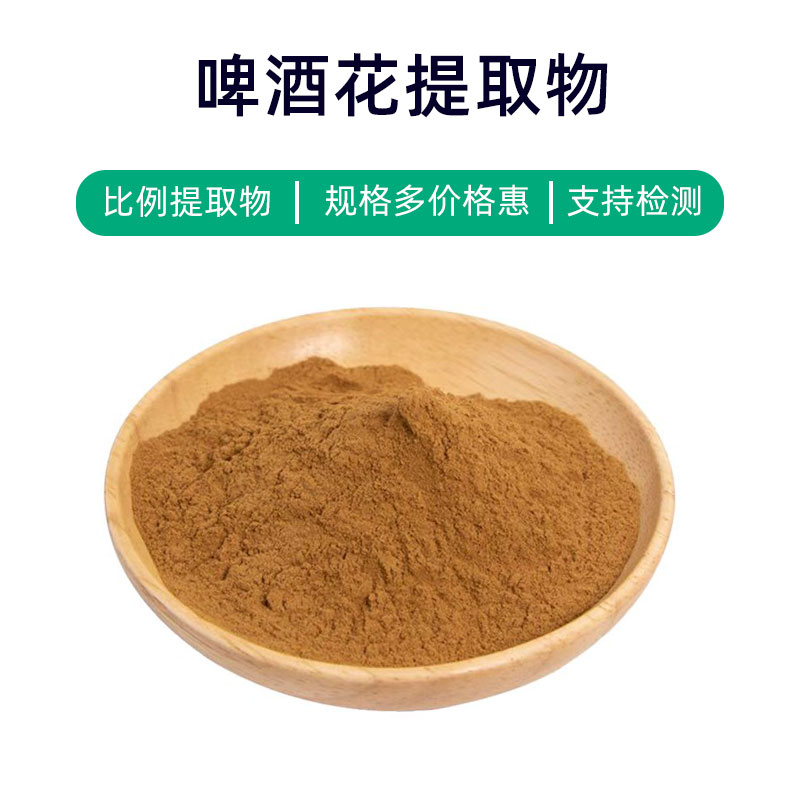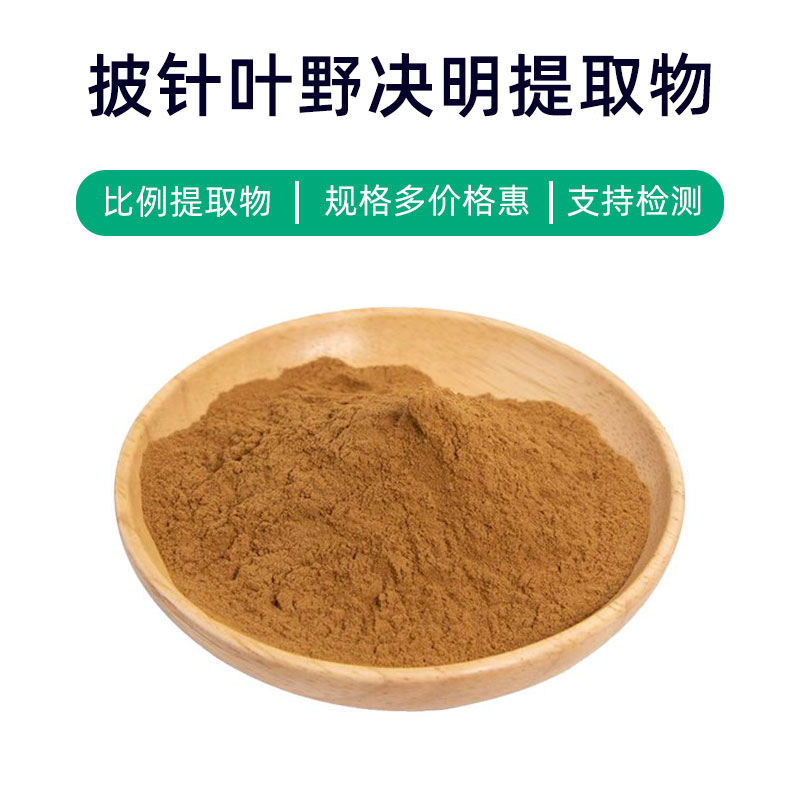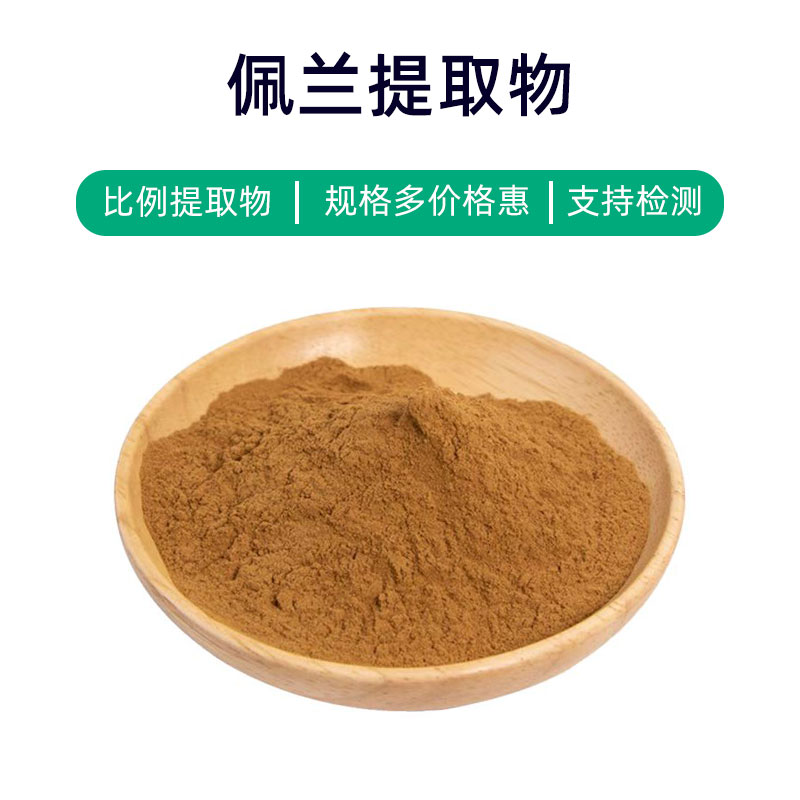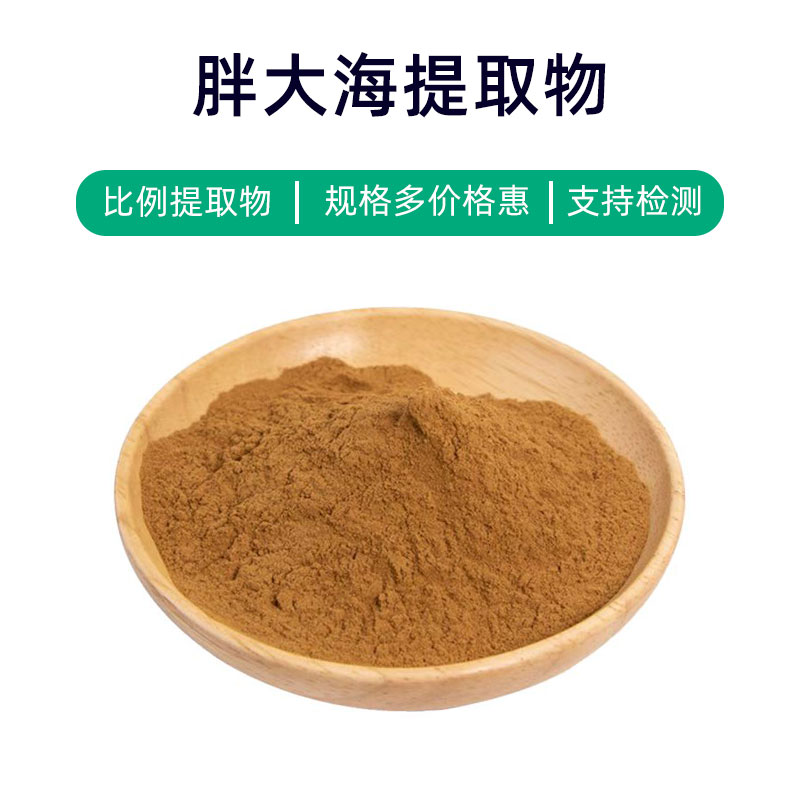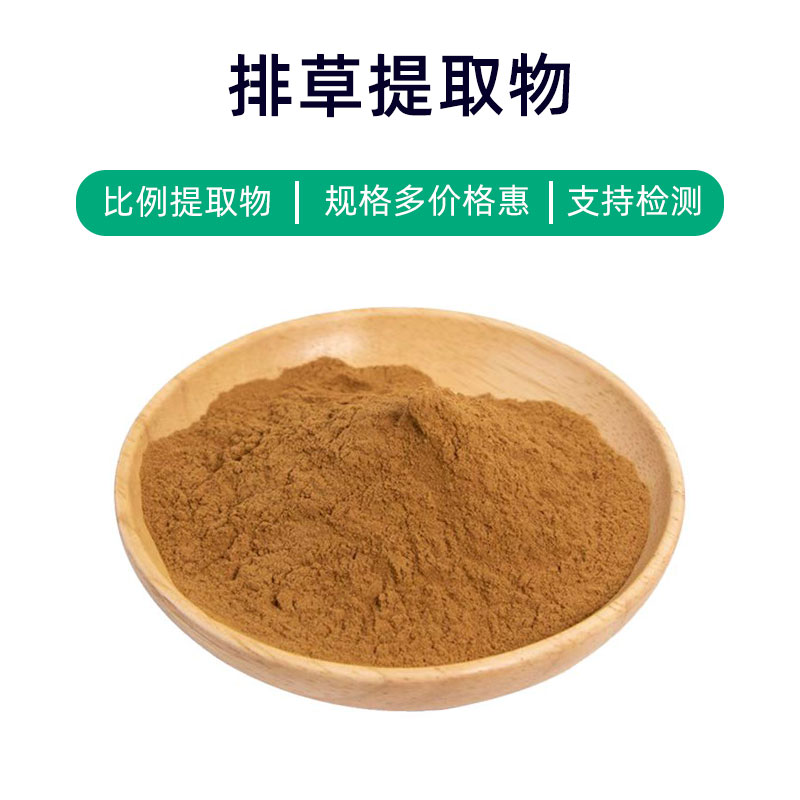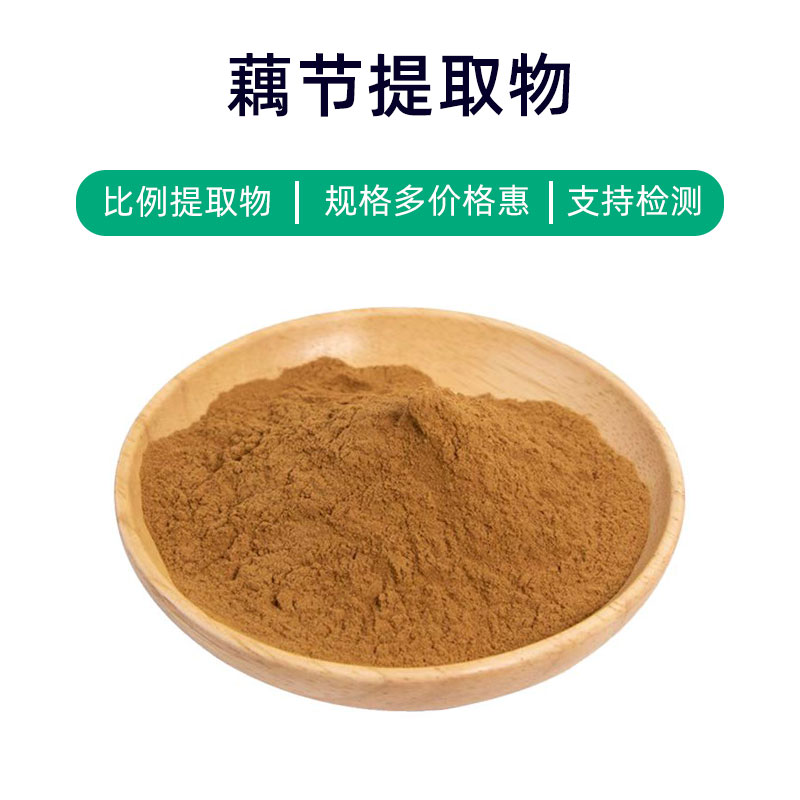Cocoa Extract Product Introduction
Cocoa extract is a natural plant extract derived from the cocoa bean, rich in compounds such as theobromine, caffeine, xanthine, and flavonoids. These components endow cocoa extract with various benefits and applications.
First, cocoa extract is abundant in antioxidants, which help neutralize free radicals, slow down the aging process, and protect cells from oxidative stress damage. Second, the caffeine and other components in cocoa extract can enhance alertness, improve focus, and boost metabolism, aiding in fatigue relief and stamina enhancement. Additionally, the flavonoids present offer anti-inflammatory, antibacterial, and antiviral effects, contributing to a strengthened immune system and increased resistance to diseases.
In the medical field, cocoa extract is commonly used in health supplements and medications to help regulate cardiovascular functions, improve blood circulation, lower cholesterol levels, and prevent arteriosclerosis. In the food sector, it is frequently added to chocolate, beverages, and baked goods, enhancing flavor and nutritional value. In cosmetics, cocoa extract is used in skincare and makeup products for its moisturizing, antioxidant, and anti-aging properties, helping improve skin texture and delay aging.
Overall, cocoa extract has a broad application potential in the pharmaceutical, food, and cosmetic industries, providing various health and beauty benefits.
Cocoa Extract Production Process
The production process of cocoa extract generally includes the following main steps:
- Harvesting and Processing Cocoa Pods: Ripe cocoa pods are harvested, and the cocoa beans inside are extracted. These beans are cleaned and peeled to remove the pod and pulp.
- Fermentation and Drying: The cocoa beans undergo fermentation in large fermentation boxes, lasting from several days to a week. This process is essential for changing the chemical composition within the beans, affecting the cocoa's flavor and texture. After fermentation, beans are dried to the appropriate moisture content, usually under sunlight.
- Roasting: The dried cocoa beans are roasted, with the temperature and time adjusted to achieve the desired flavor and color. Roasting enhances the flavor profile and gives cocoa its characteristic aroma.
- Grinding and Extraction: The roasted beans are ground into cocoa powder and finely milled to achieve a smooth texture. The cocoa powder is then subjected to solvent extraction or water extraction to isolate beneficial components, forming cocoa extract.
- Filtration and Concentration: The liquid obtained from extraction is filtered and concentrated to remove impurities and solvents, resulting in a concentrated extract.
- Drying and Packaging: The concentrated extract undergoes drying to control moisture content. The dried extract is then packaged in appropriate containers to ensure stability and shelf life.
This is the general production process for cocoa extract; specific parameters and methods may vary among different manufacturers and product requirements.
Cocoa Extract Benefits and Side Effects
Cocoa extract, derived from cocoa beans, has multiple health benefits:
- Antioxidant Properties: Rich in polyphenols like flavonoids, cocoa extract has strong antioxidant capabilities, helping to eliminate free radicals, slow down cellular aging, and reduce oxidative stress damage.
- Cardiovascular Protection: Components such as catechins and caffeine in cocoa extract help lower cholesterol, improve vascular dilation, and reduce the risk of cardiovascular diseases, promoting heart health.
- Anti-Inflammatory Effects: Some elements in cocoa extract possess anti-inflammatory properties that can alleviate inflammation and symptoms of inflammatory diseases like arthritis, helping to ease pain and improve joint function.
- Cognitive Enhancement: The caffeine in cocoa extract stimulates the central nervous system, boosting alertness and focus, and enhancing memory, which can help improve work and study efficiency.
- Mood Regulation: Cocoa extract contains components that promote the release of neurotransmitters like tyrosine and phenylethylamine, which can enhance mood and alleviate anxiety and depression.
- Skin Protection: The polyphenols in cocoa extract offer anti-inflammatory and antioxidant effects, protecting skin from external damage, slowing down aging, and maintaining skin health and youthfulness.
However, despite its benefits, caution is needed regarding the following points:
- Caffeine Overconsumption: Cocoa extract contains caffeine, and excessive intake may cause rapid heartbeat, insomnia, headaches, and other adverse effects, especially in individuals sensitive to caffeine or with cardiovascular conditions.
- Allergic Reactions: Some people may be allergic to certain components in cocoa extract, exhibiting symptoms like skin allergies or digestive issues, and should discontinue use and seek medical attention if necessary.
- Choosing Reliable Products: When purchasing cocoa extract, select products from reputable sources to avoid low-quality items that may contain additives or contaminants, ensuring safe and effective use.
Cocoa Extract Applications and Dosage
Cocoa extract is widely used in pharmaceuticals, food, and cosmetics, with the following detailed applications:
Medical Applications:
- Cardiovascular Health: Cocoa extract, rich in polyphenols and catechins, can help lower cholesterol and improve vascular dilation to prevent cardiovascular diseases. The recommended daily dosage as an oral supplement is 10-30 grams.
- Antioxidant Therapy: The antioxidant properties of cocoa extract can help prevent free radical damage, slow down cellular aging, and prevent chronic diseases. The suggested daily dosage for oral supplementation is 5-20 grams.
- Memory Improvement: The caffeine in cocoa extract stimulates the central nervous system, enhancing alertness and helping improve memory. The recommended daily dosage as an oral supplement is 5-15 grams.
Food Applications:
- Chocolate Products: Cocoa extract is a primary ingredient in chocolate products, used to make chocolate, chocolate candies, and beverages. The quantity varies based on the product formulation.
- Flavoring: Due to its rich flavor and aroma, cocoa extract can be used to enhance various foods like cookies, pastries, and ice creams. The quantity is determined by product requirements.
Cosmetic Applications:
- Skincare Products: Cocoa extract, containing polyphenols and vitamin E, provides antioxidant, anti-inflammatory, and moisturizing benefits, suitable for use in creams, lotions, and masks. The typical concentration ranges from 1-5% of the total formula.
- Hair Care: Cocoa extract nourishes hair and enhances shine, making it ideal for shampoos and conditioners, typically used in concentrations of 1-5% of the total formulation.
When using cocoa extract, it's important to follow the specific uses and recommended dosages, avoiding excessive intake or external application, particularly for pregnant women, children, or those allergic to cocoa, who should consult a healthcare professional beforehand. Always choose high-quality products from reputable sources to ensure safe and effective use.
Cocoa Plant Overview: Distribution and Growing Conditions
Cocoa (Theobroma cacao) is an evergreen woody plant in the Malvaceae family and is the principal source of cocoa extract. Below is an overview of the cocoa plant's characteristics, distribution, and growing environment:
Plant Overview:
Cocoa is a tree that typically grows 4-8 meters tall, sometimes reaching up to 15 meters. It has broad leaves and small pale yellow flowers that bloom on the trunk and branches. Each flower has five petals, and the fruit, which contains the seeds, is a large red or yellow pod.
Distribution:
Cocoa is native to Central and South America, primarily found in regions of the Amazon Basin, Colombia, Venezuela, Peru, and Ecuador. It has now been cultivated in many tropical and subtropical areas, including Ivory Coast, Ghana, and Nigeria in West Africa, as well as Malaysia and Indonesia in Southeast Asia.
Growing Conditions:
- Climate: Cocoa thrives in warm, humid climates with ideal growth temperatures between 21-32 degrees Celsius and annual rainfall of 1500-2500mm. High humidity and ample sunlight are crucial for cocoa growth.
- Soil: Cocoa plants are adaptable and don’t have strict soil requirements but prefer well-drained, organic-rich soils like sandy loam or loam.
- Altitude: Cocoa is commonly grown at altitudes between 200-800 meters, with certain varieties thriving at elevations above 1000 meters.
- Growing Seasons: Cocoa can grow year-round, but there are peak growth periods, usually coinciding with the rainy season and warmer months.
- Cultivation Methods: Cocoa is typically propagated from seeds, which are germinated and transplanted into seedbeds before being moved to fields for cultivation. Regular pruning, fertilization, and irrigation are necessary to ensure healthy growth and high yield of cocoa pods.
Cultivating cocoa involves specific technical skills, but with suitable climate and soil conditions, it provides abundant cocoa fruits as a reliable source for cocoa extract production.
Cocoa Extract Processing and Storage
The processing and storage of cocoa extract are crucial for maintaining its quality and nutritional properties:
- Processing Steps: The processing of cocoa extract typically includes harvesting the fruit, breaking the fruit, shelling the seeds, fermenting the seeds, drying, roasting, grinding, and extraction. Temperature, humidity, and timing must be carefully controlled at each step to ensure the quality and nutritional components of the extract.
- Storage and Preservation: Cocoa extract should be stored in conditions that avoid moisture, heat, and direct sunlight. It is generally recommended to keep the extract in a dry, cool, well-ventilated area, away from bright light and high temperatures to prevent oxidation and quality degradation. Sealed containers are a good choice for storing extracts, as they can extend shelf life.
- Packaging Methods: Cocoa extract is usually packaged in airtight materials, like foil bags or plastic seals, to prevent air and moisture infiltration. Avoid transparent packaging to prevent oxidation from sunlight exposure.
- Shelf Life: The shelf life of cocoa extract depends on processing methods, storage conditions, and packaging. Properly stored cocoa extract can retain quality for a long time, but it's advisable to use it sooner within its shelf life to ensure optimal quality and nutritional value.
With scientific processing techniques and appropriate storage methods, cocoa extract can maintain its original nutritional components and flavor profile, providing consumers with a premium product experience.
Monica Sun is a seasoned expert in the plant extraction industry with over a decade of experience in research and production. She specializes in the extraction and purification of plant active ingredients, focusing on driving innovation in natural product applications. Monica has participated in the development of multiple functional plant extracts, delivering high-value natural raw material solutions for the health food, pharmaceutical, and dietary supplement sectors.









